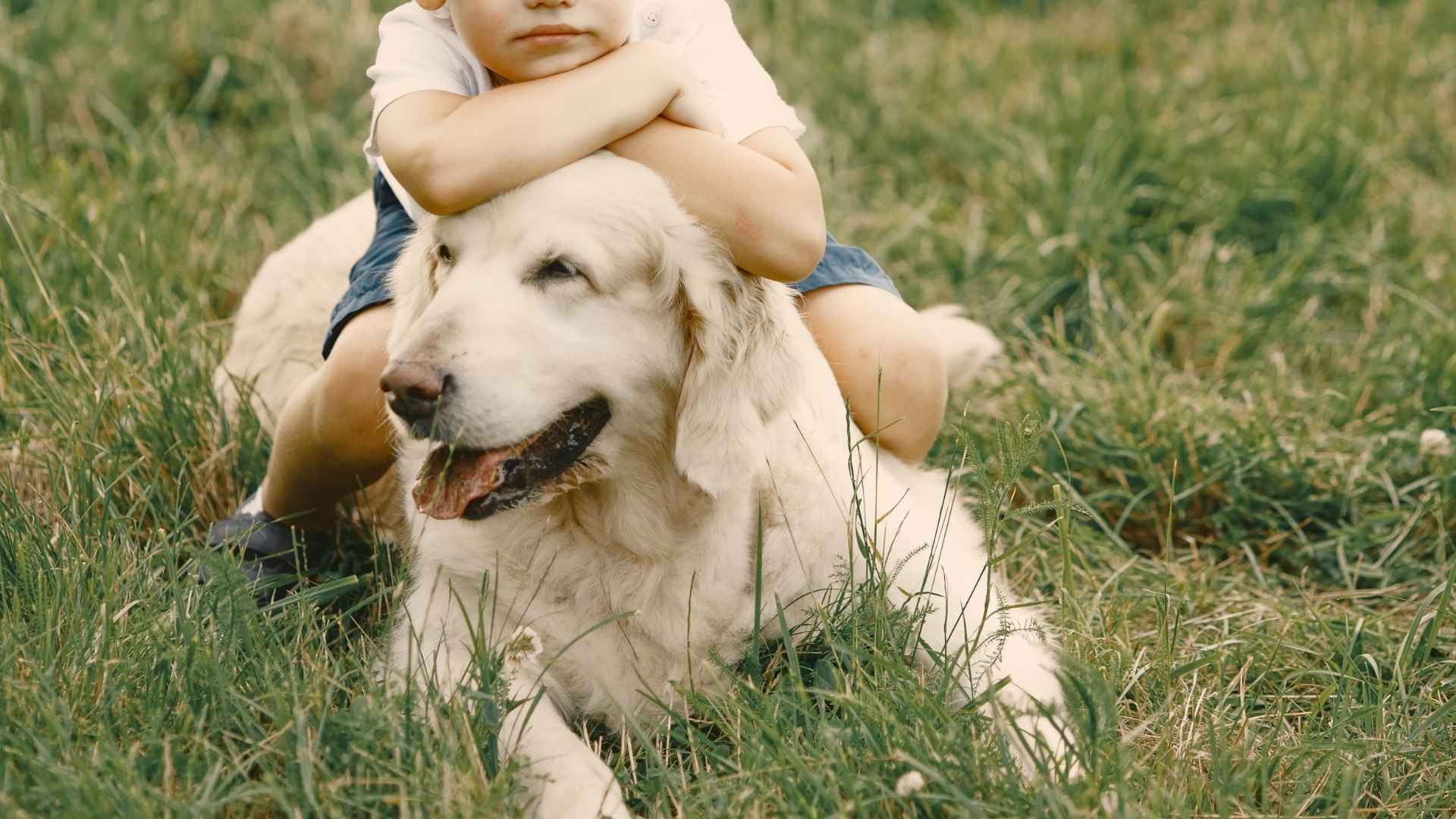Every parent has experienced that magical moment when their child’s face lights up with wonder while playing with their dogs. And in such moments, you can see your child trying to get on your dog’s back. Well, luckily, some dog breeds can safely give rides to young kids without sacrificing their innate protective instincts.
This unique experience requires more than simply finding a large dog. Rather, the breeds that excel at child-carrying possess specific characteristics refined through centuries of working alongside humans. Some dogs combine physical strength with naturally calm temperaments and an almost intuitive understanding of their precious cargo.
Important: Most veterinarians discourage allowing children to ride dogs regularly. These activities should only be brief, supervised, and done after veterinary clearance to ensure safety for both dog and child.
Dog Breeds That Let Kids Ride on Their Backs Safely
We have selected seven dog breeds that are perfect for this type of adventure. Our selection process focused on dogs that meet three essential criteria. They have exceptional weight-bearing capacity built into their bones.
They have an instinctive, calm reaction to sudden movements. And most importantly, they have an ingrained protective nature that makes child safety their priority. Without further ado, let’s discuss these child-friendly breeds!
1. Newfoundland
Along the icy waters of Newfoundland’s coast in the 1800s, these massive black dogs drove fearlessly into Atlantic swells to rescue drowning sailors. Moreover, they hauled fishing nets weighing hundreds of pounds and transported supplies across treacherous terrain.
Today’s Newfoundlands carry that same incredible strength in a surprisingly gentle package, making them exceptional candidates for such child riding tasks.
Weight Range: 100-150 pounds
Coat: Water-repellent with a double layer
Bred for: Rescue work
Body: Exceptionally broad with natural weight distribution
The Gentle Giant’s Personality
Moreover, Newfoundlands have a kind of magical sense of reading the emotions of children. They automatically bend down when a nervous young rider is mounted and adjust to the most minute change of weight.
Fun fact: “Seaman,” the companion of Lewis and Clark, once killed and retrieved an antelope swimming in the river back to camp by himself, yet was known to be very gentle with the explorers’ children.
Health and Safety
According to the AKC, cardiac, hip, and elbow assessments every year are an absolute necessity. These gentle giants are susceptible to joint problems that can be aggravated by weight-bearing activities without proper supervision.
2. Bernese Mountain Dog
Swiss valleys dotted with wooden chalets tell the story of tricolored dogs with flowing coats who pulled milk carts that were heavier than themselves. Bernese Mountain Dogs were literally bred to be used as living tractors, a heritage that is perfect for modern riding duties.
Meanwhile, their natural draft instincts mean carrying weight feels familiar rather than foreign, unlike breeds that tense up under load.
Weight Range: 70-115 pounds
Coat: Thick double-layered
Bred for: Drafting and guarding livestock
Body: Tall, muscular, with a broad back
What makes Bernese Mountain Dogs special?
A Bernese’s calm demeanor and affectionate nature create a deep family bond. They rarely spook when your little ones try to swing on their backs, making them a good fit for cautious parents seeking a reliable companion for their small kids.
Health and Safety
If you are aiming to let your children ride on a Bernese’s back, it is best that you create a training regimen for your dog. The best practice is cart-pulling to build their hindquarter strength. And always remember to teach your dog commands such as “steady” or “hold” before letting young kids mount them.
It is important to note that studies show that 55 percent of Bernese deaths result from cancer, making regular health screening crucial.
3. Saint Bernard
High in the treacherous Great St Bernard Pass, where Apine storms could bury travelers in minutes, monks depended on dogs with borderline supernatural rescue ability. Saint Bernards are just your common pets; they were lifesavers who could locate buried victims through heaps of snow.
As a result of this natural instinct, Bernards became one of the best dog breeds that move with conviction and remain perfectly calm when small children get on their backs.
Weight Range: 120-180 pounds
Coat: Can be short or long, double-layered
Originally bred for: Rescue work
Body: Strong and bulky body
Why Saints Excel at Kid-Carrying
Saint Bernards possess what experts call “inherited calmness,” a genetic predisposition to being patient, which was honed through years of rescue work. Furthermore, they have a gentle nature and remain calm under pressure.
Fun fact: A Saint named Barry has saved roughly 100 lives and has been memorialized in the Natural History Museum in Bern.
Health and Safety
Saints suffer from Gastric Dilatation Volvulus (bloat), which has a 15 percent mortality rate. To make sure that your dog is healthy, you can use slow-feeder bowls and give smaller portions.
4. Greater Swiss Mountain Dog
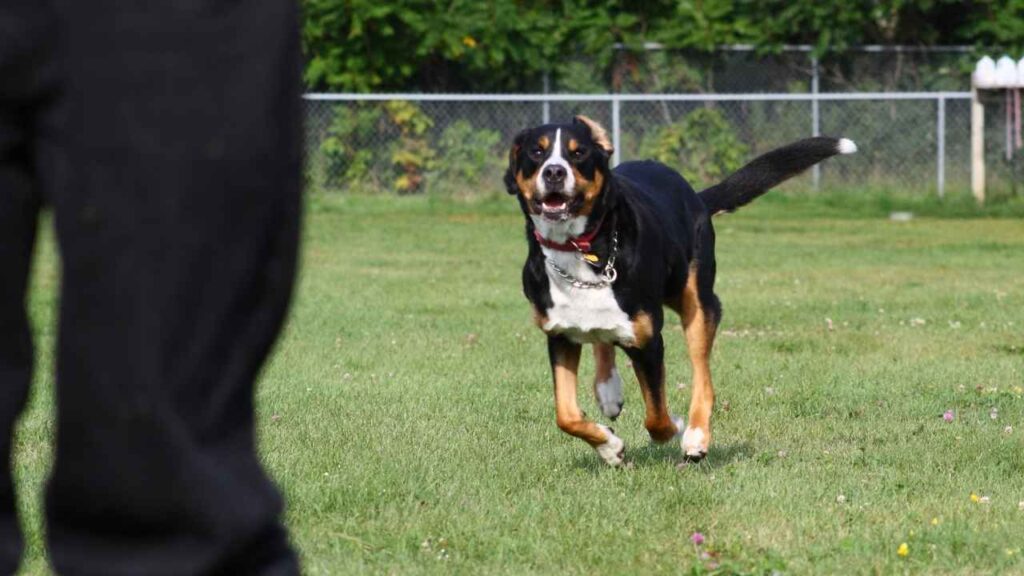
The GSMD was nicknamed the poor man’s horse by Swiss farmers in the countryside. They are basically musclebound powerhouses that could outperform actual horses in the mountains while at a fraction of the food costs.
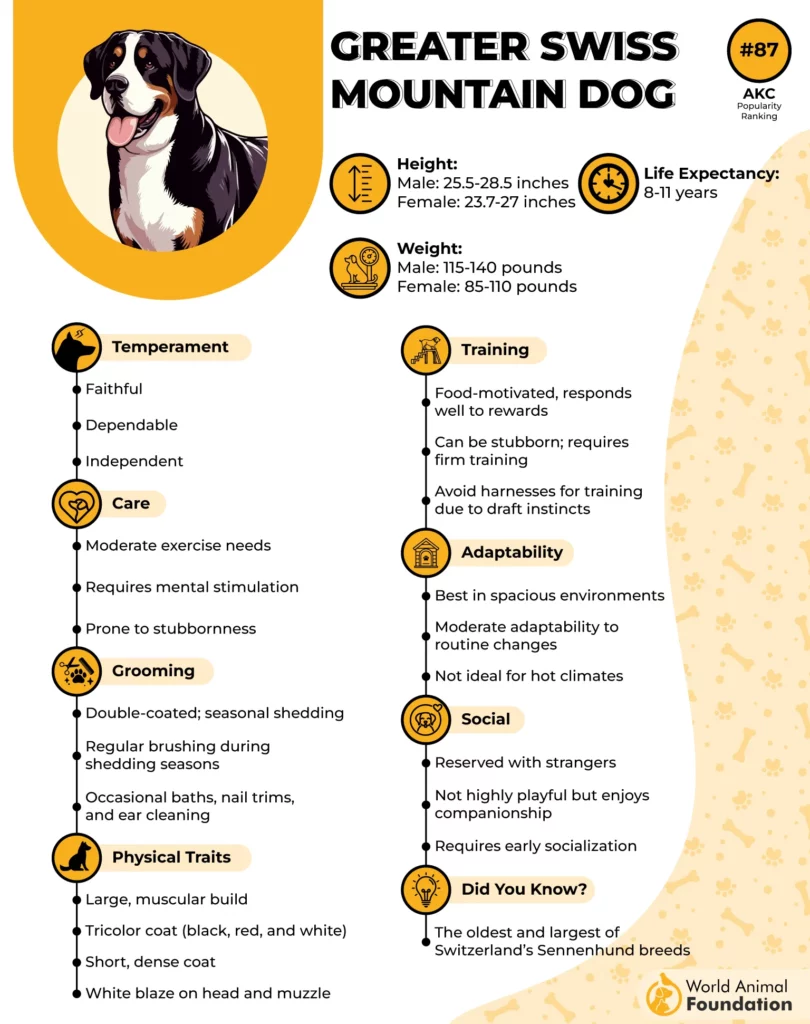
These high-energy dogs don’t tire easily, unlike other dogs, making them a great choice for a household with energetic kids.
Weight Range: 85-140 pounds
Coat: Smooth, short, double-layered
Originally bred for: Herding cattle and guarding livestock
Body: Sturdy, muscular, well-boned
The Swissy Advantage
The GSMD has incredible endurance, making them a good fit for steady riding without the panting and overexertion that is common in other breeds. Their patient and playful temperament means they’ll calmly wait for your children to get on their backs.
Health and Safety
PetMD notes that these dog breeds can suffer from spleen torsion. If your pet suffers from splenic torsion, you should avoid letting your kids ride them.
It’s important to note that you should avoid any load-bearing exercise when the dog is young, as their growing joints are vulnerable. After they have matured, you can begin gradual training with draft commands.
5. Great Dane
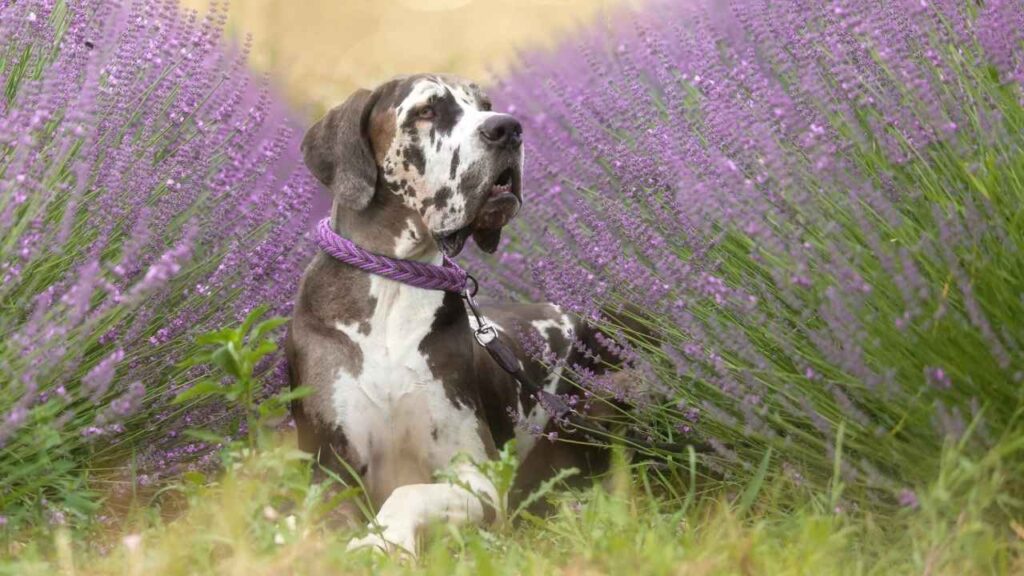
People are often surprised to find out that Great Danes, despite their size, are not a very active breed. They are very affectionate but tend to laze around and need moderate exercise to stay healthy. Even after earning the nickname “Apollo of Dogs,” they’re practically couch potatoes in giant bodies.
Weight Range: 110-175 pounds
Coat: Short, smooth single-coat
Bred for: Hunting bear, boar, and deer
Body: Sleek, muscular build
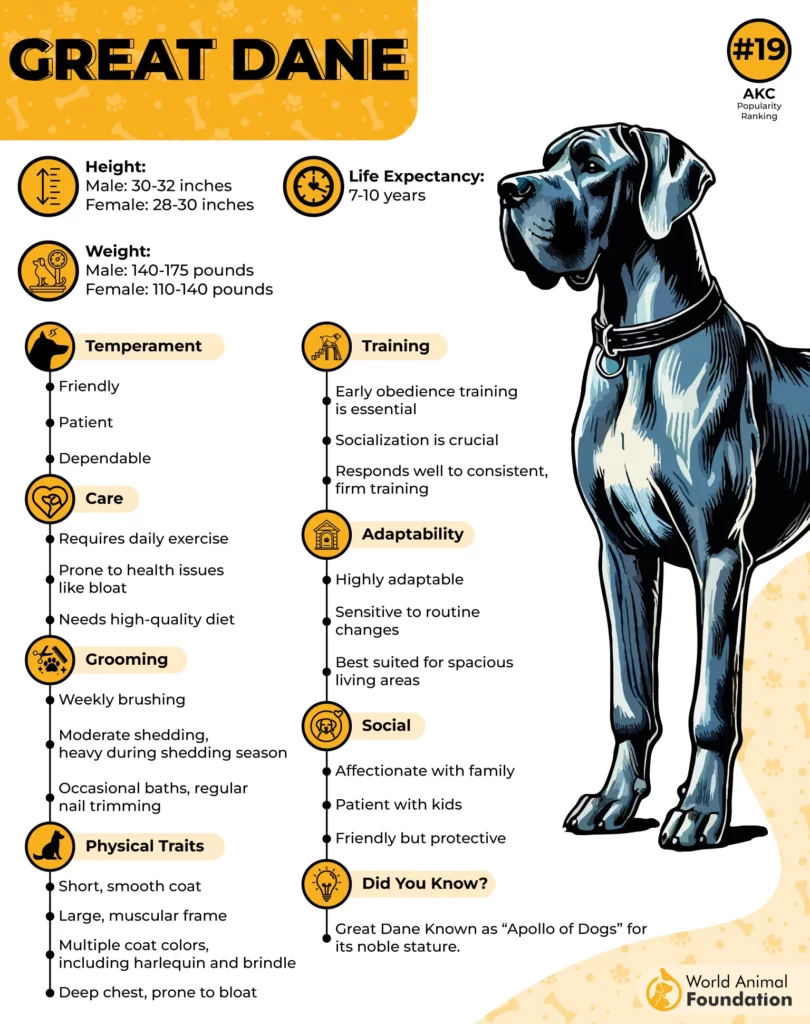
Why Great Danes are great for a child riding on their backs
Great Danes offer the largest “riding platform” of any breed, making weight distribution almost effortless. Their long, springy stride creates a rocking-horse-like motion that children often find soothing.
Fun fact: Great Danes sometimes forget about their own body weight and will often try to sit on their owners’ laps.
Health and Safety
Purina says that Great Danes are predisposed to Gastric dilatation volvulus and dilated cardiomyopathy. To prevent any complications for your dog, visit your local vet annually to monitor their health and ensure their well-being.
6. Leonberger
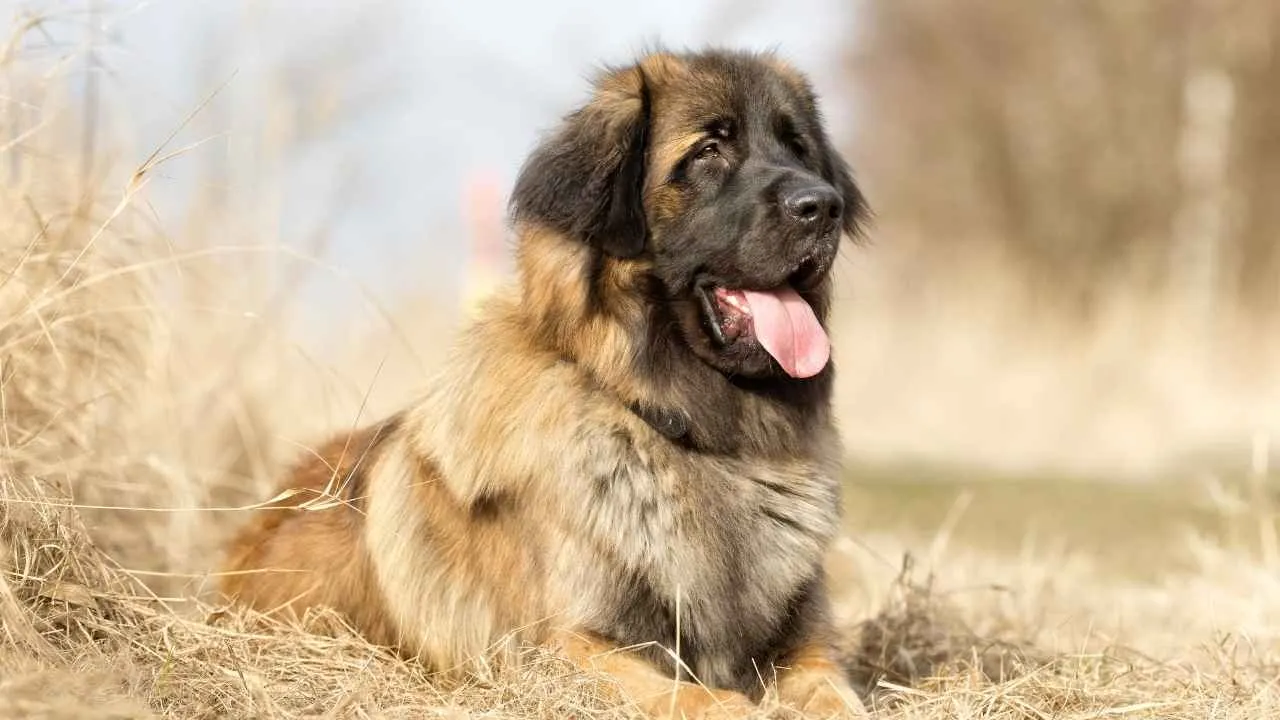
The Leonberger, a giant dog breed that hails from Germany, is a personification of perfect family dogs. Due to their gentle nature and appetite for love, these intelligent dogs make great companions for your children.
With proper training and mental stimulation, Leonbergers are easier to handle than most dog breeds. They are a highly active breed that requires moderate exercise, such as long walks, swimming, or indoor play.
Weight Range: 90-170 pounds
Coat: Thick, long double coat with a mane
Bred for: Drafting and watchdog
Body: Well-muscled, medium to heavy boned
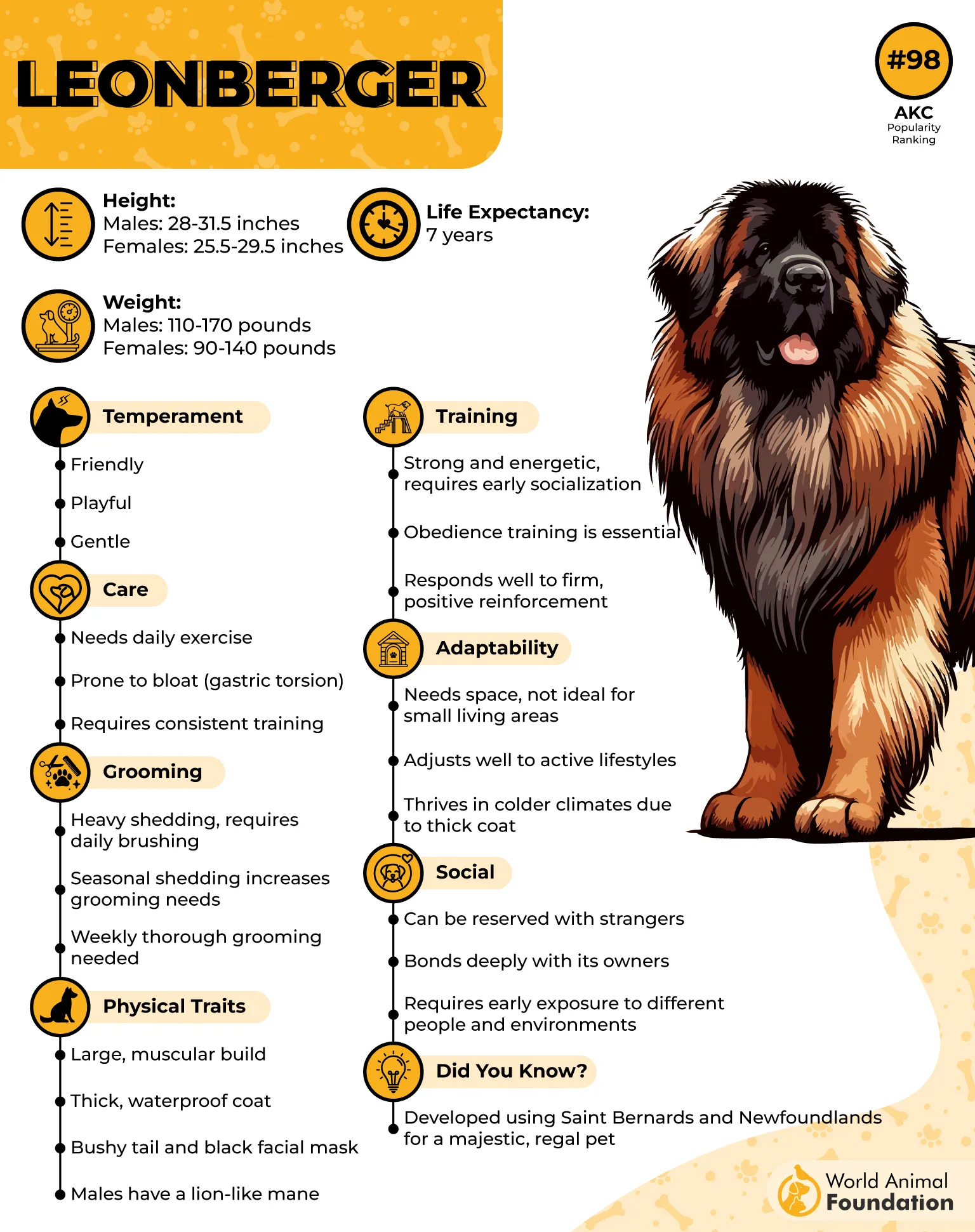
Leonberger’s Royal Advantage
Interestingly, these dogs have a royal ancestry; they were the palace dogs in the court of Empress Elisabeth of Austria. And Leonbergers have not forgotten this heritage. After the riding sessions, these dogs often settle regally at the child’s feet, maintaining a dignified posture and showing you why they were palace favorites.
Health and Safety
Leonbergers also suffer from bloat, hip dysplasia, and elbow dysplasia. Regularly take your pets to the vet and maintain a proper diet.
7. Great Pyrenees

On a midnight French mountainside, where wolves circled flocks of sheep, one massive white dog would stand fearlessly between the predators and his flock.
For centuries, Great Pyrenees have proven that true courage comes in patient, protective packages. Unlike attention-seeking breeds, these guardians naturally prioritize their family’s safety above personal comfort.
Weight Range: 100 pounds and up
Coat: Long double-layered
Bred for: Guarding sheep
Body: Muscular and sturdy
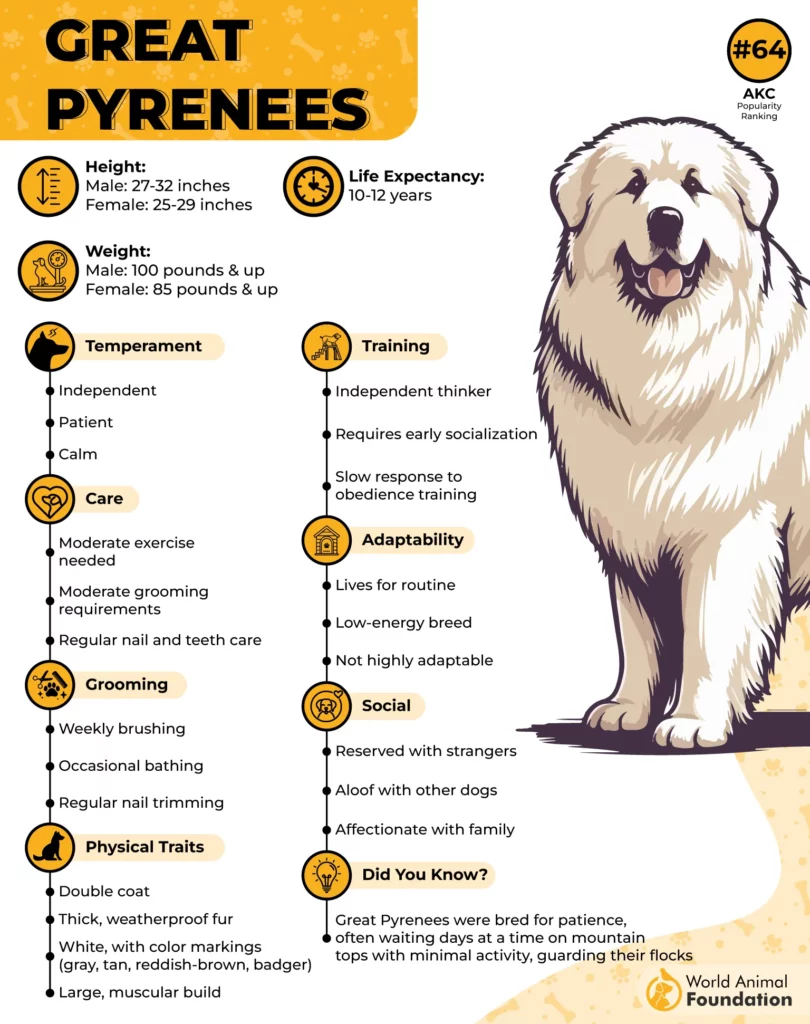
The Dewclaw Advantage
Notably, the Pyrenees have extra “thumbs” on their rear legs called dewclaws. These claws provide enhanced grip and stability that help keep the Pyrenees steady when your kids are on its back.
And after most riding sessions, these dogs will sit and watch over their human “flock,” proving their loyalty and protective nature.
Health and Safety
The Pyrenees can suffer from hip dysplasia, eye disorders, luxating patellas, and neurological and immune-mediated disorders. Remember to set up vet visits, provide regular exercise, and a balanced diet to make sure your pup lives his life to the fullest.
Conclusion
The sight of your child’s wonder-filled face as they experience their first ride on their furry friend creates memories that last a lifetime. These seven remarkable breeds offer that fairy-tale experience, but only when we respect their physical limits.
Any successful riding experience starts with veterinary clearance, correct weight ratios (child must be less than one-eighth the weight of the dog), and knowing that these gentle giants are doing this out of love, not obligation.


